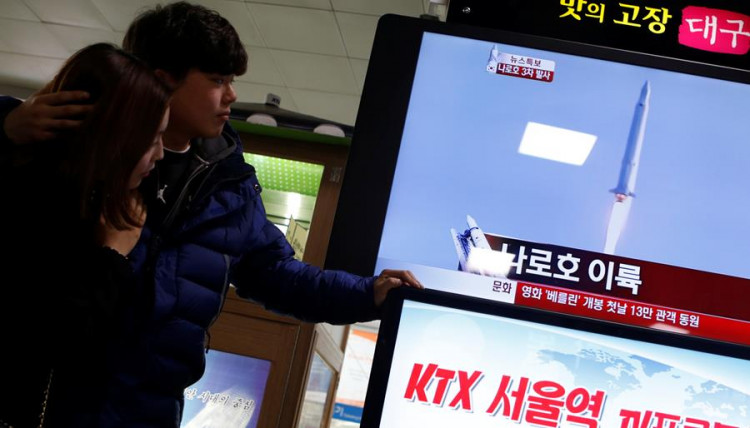On Wednesday, North Korea launched three missiles, one of which is believed to be an intercontinental ballistic missile, after U.S. President Joe Biden returned from a trip to Asia during which he committed to new provisions to dissuade the nuclear-armed regime.
The Joint Chiefs of Staff of South Korea reported that the three missiles were launched in less than an hour from the Sunan neighborhood of the North's capital, Pyongyang, where the international airport has become a center for missile launches.
The first rocket fired on Wednesday seemed to be an intercontinental ballistic missile, while the second, unidentified missile, failed mid-flight, according to South Korea. It was stated that the third missile was a short-range ballistic missile (SRBM).
South Korea's military indicated that in response, the United States and South Korea conducted coordinated military exercises, including surface-to-surface missile launches.
U.S. and South Korean authorities have recently warned that North Korea was set to conduct another nuclear test, possibly during Biden's trip to Asia, which included a summit with South Korean President Yoon Suk-yi.
This year, the North has launched a flurry of missile launches, including the first test of its biggest intercontinental ballistic missiles in nearly five years. It appears to be planning for its first nuclear test since 2017 as well.
Yoon, who assumed office on May 10, conducted his first meeting of the national security council, which severely criticized the most recent launch as a "grave provocation," particularly because it occurred before Biden's return home.
Yoon instructed his advisers to bolster the United States' extended deterrence and joint defense posture as agreed with Biden, his office disclosed.
Biden, who departed Japan on Tuesday evening, was briefed on the launches and will continue to receive updates, according to a White House official.
Japan reported at least two launches, but admitted there could have been more.
One of the missiles traveled approximately 750 kilometers to a maximum altitude of 50 kilometers and appeared capable of altering its route in flight, according to Japan's defense minister.
Another missile went approximately 300 kilometers and reached an altitude of 550 kilometers, he claimed.
The missiles looked to have fallen outside of Japan's exclusive economic zone, NHK reported.
The Indo-Pacific Command of the U.S. military reported being aware of "several" launches. They underlined the "destabilizing consequences of the DPRK's illicit weapons development" but did not constitute an urgent threat, a statement said.






